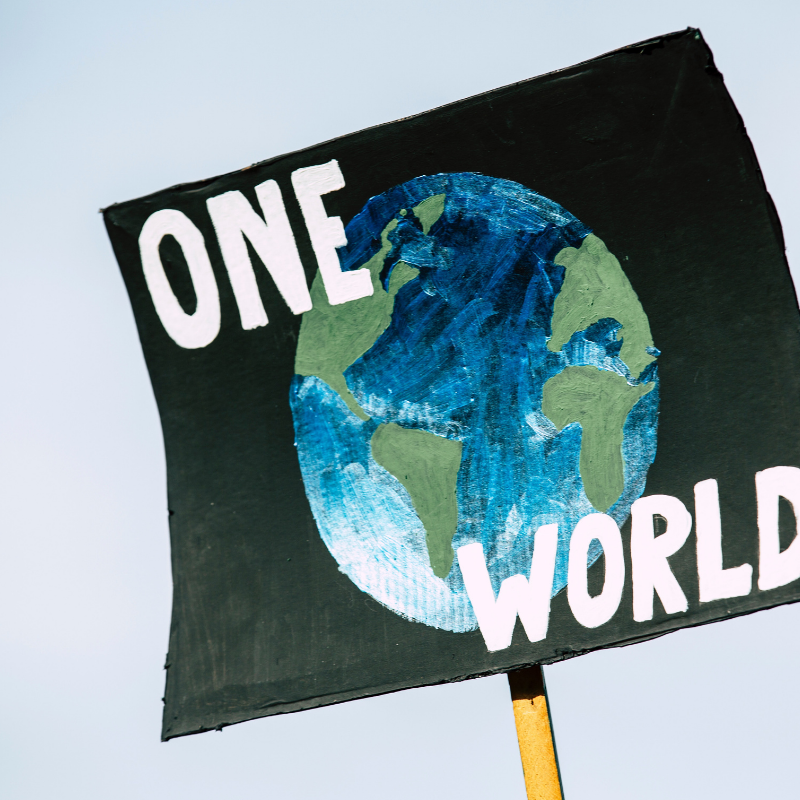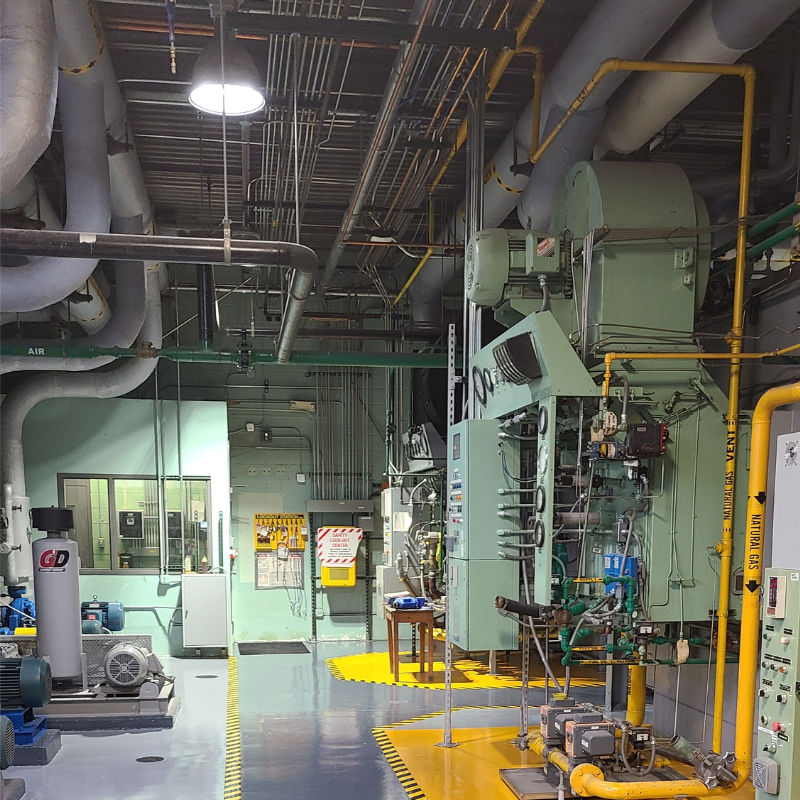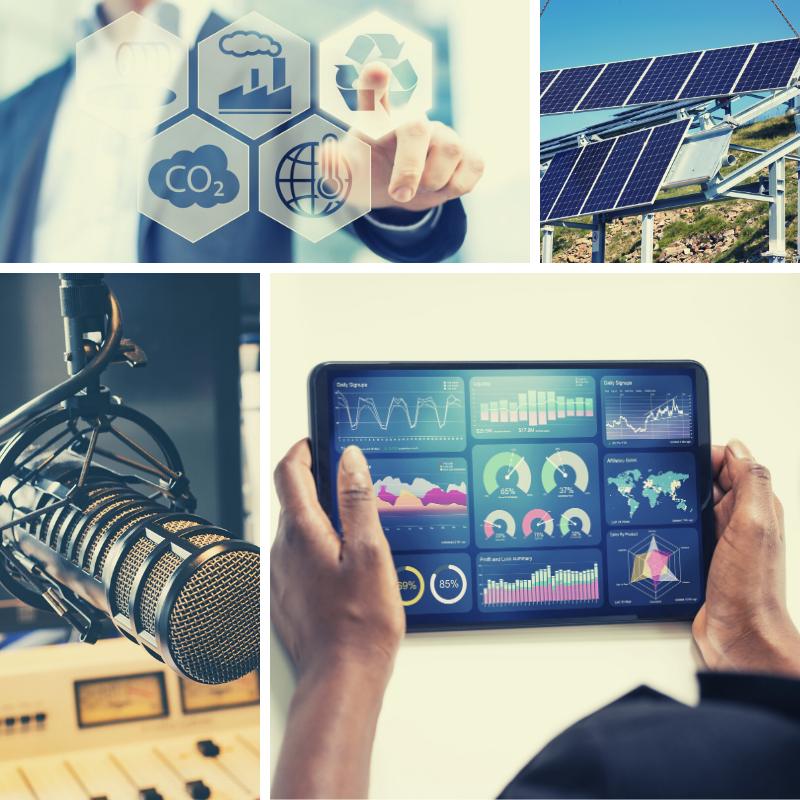Why Sustainability is More Relevant Now than Ever
The year 2020 will be difficult to forget. It will be ingrained in our memories as the year of the pandemic and the year the fight for racial justice in the United States reached a tipping point. Those events may well overshadow any other memory or achievement from this year, and for good reason. Before our world changed though, Colorado College started 2020 off with a spectacular achievement: as of January 1, 2020, CC reached its long-standing milestone of carbon neutrality - only the eighth institution to achieve this massive feat. The national news stage took note briefly as our small liberal arts institution at the base of Pikes Peak joined the ranks of leading sustainable institutions. Our world has changed since then, however, and it is easy to wonder: Where does sustainability fit in a world where COVID-19 and racial injustices underly all other efforts?
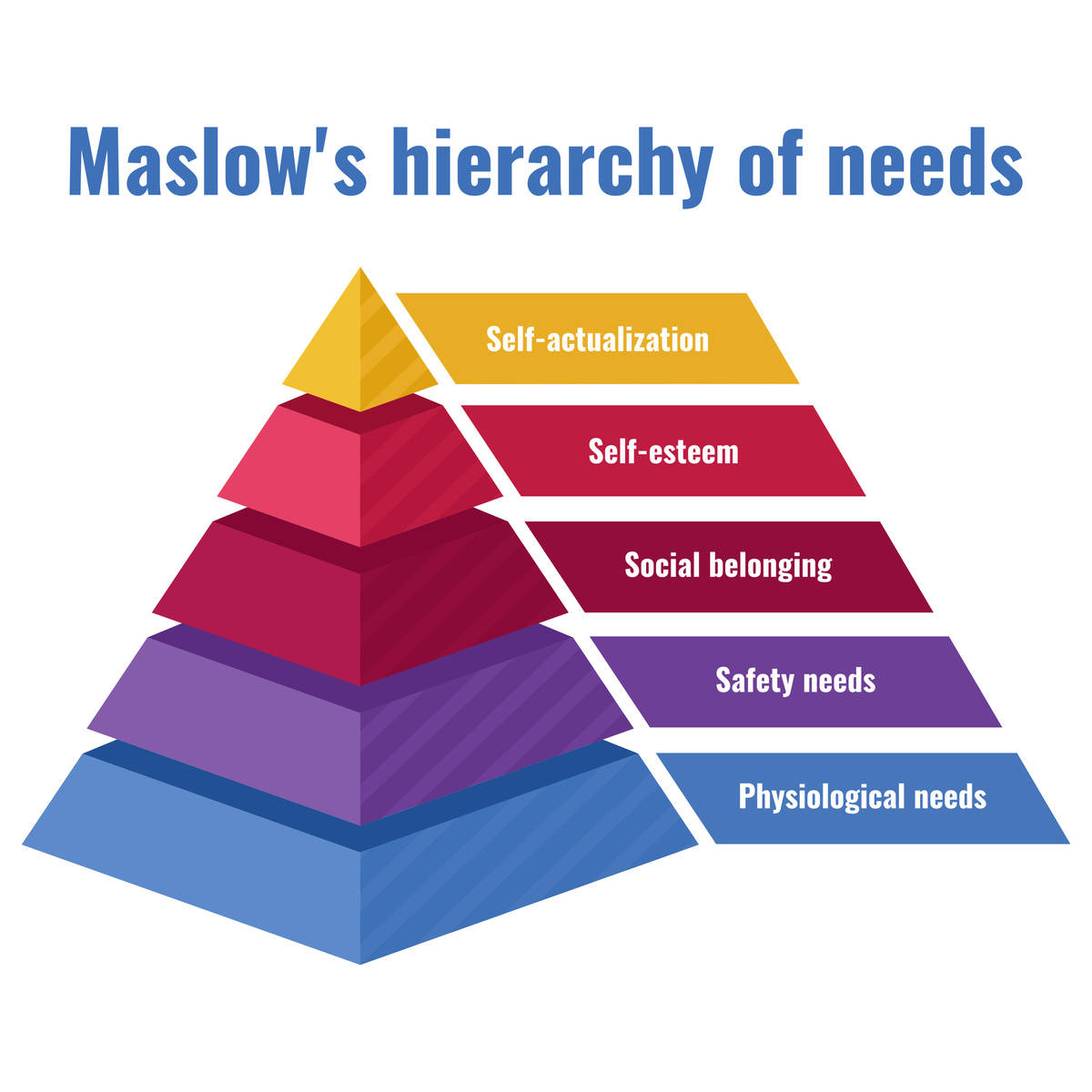
The answer is a message that's become familiar in the Office of Sustainability as we work with students, faculty, and staff across the college: It's all sustainability. In our Sustainability 101 trainings, we refer heavily to the most accepted definition of sustainability: "meeting current needs without compromising future generations' ability to meet their needs" Over the past decades, that definition has most often been interpreted to apply to our use of environmental resources, but those resources can only meet certain needs. Understanding broader human needs is a deeper dive and I refer to Maslow's Hierarchy of Needs - a model that is understood by most who have taken a psychology class in high school - to illustrate those broader human needs that include intangible and self-defined needs. Simply put, sustainability aims to provide the opportunity for all of us to meet all of those needs now and into the future.
That sounds nice, but this is a critical moment and many of us are just trying to survive right now, right? I agree - we're all trying to survive and ultimately to thrive. The United Nations Sustainable Development Goals (SDGs) have been developed through decades of negotiations and input from over 190 countries and set forth the primary focuses if we are to thrive - that is, if we are to get to a place where we're broadly meeting needs in a way that can continue into the future. These SDGs have outlined 17 primary areas that lead to a more sustainable world. Some people are surprised to see that, while these include environmental goals, they include far more goals pertaining to equity: income equality; equitable access to food; gender equality; racial equality; access to healthcare, and more.
Those of us who work as sustainability professionals have taken on a large role: to help make connections between those SDGs and keep those connections in view as we work towards progress. None of these goals exists in isolation; they're all inherently impacted by one another. I've often used this (hopefully) easy to understand example to help illustrate this, beginning with one of our most commonly recognized sustainability efforts: CC's work towards carbon neutrality (Goal #13) can help mitigate climate impacts on our ecosystems (Goal #15). Some of those least desirable impacts disproportionately affect people who cannot afford to move away from them. One example is that of heat islands: people who live in urban areas are often subject to higher temperatures due to the surrounding urban landscape and the lack of services that a fully functioning ecosystem would provide. Reducing global temperatures would have impacts that help reduce those inequalities (Goal #10) and may also reduce their electric bill as they don't need to run their air conditioners as often. That means they may have more income to use to meet other needs, possibly on healthy foods (Goal #2) or on education (Goal #4) - each of which has additional impacts on other goals. This is a relatively simple example, but begins to show the many connections between all of these efforts.
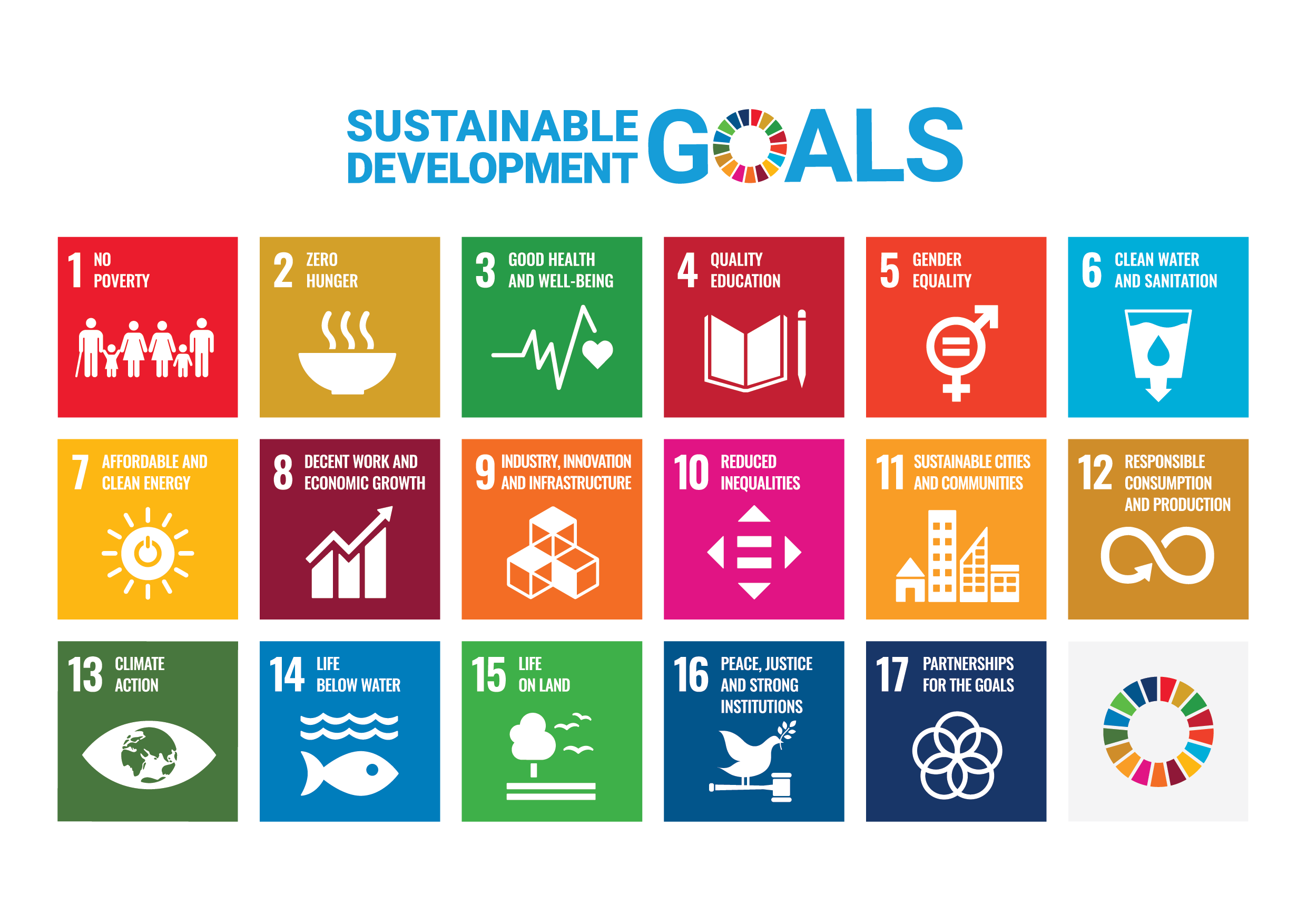
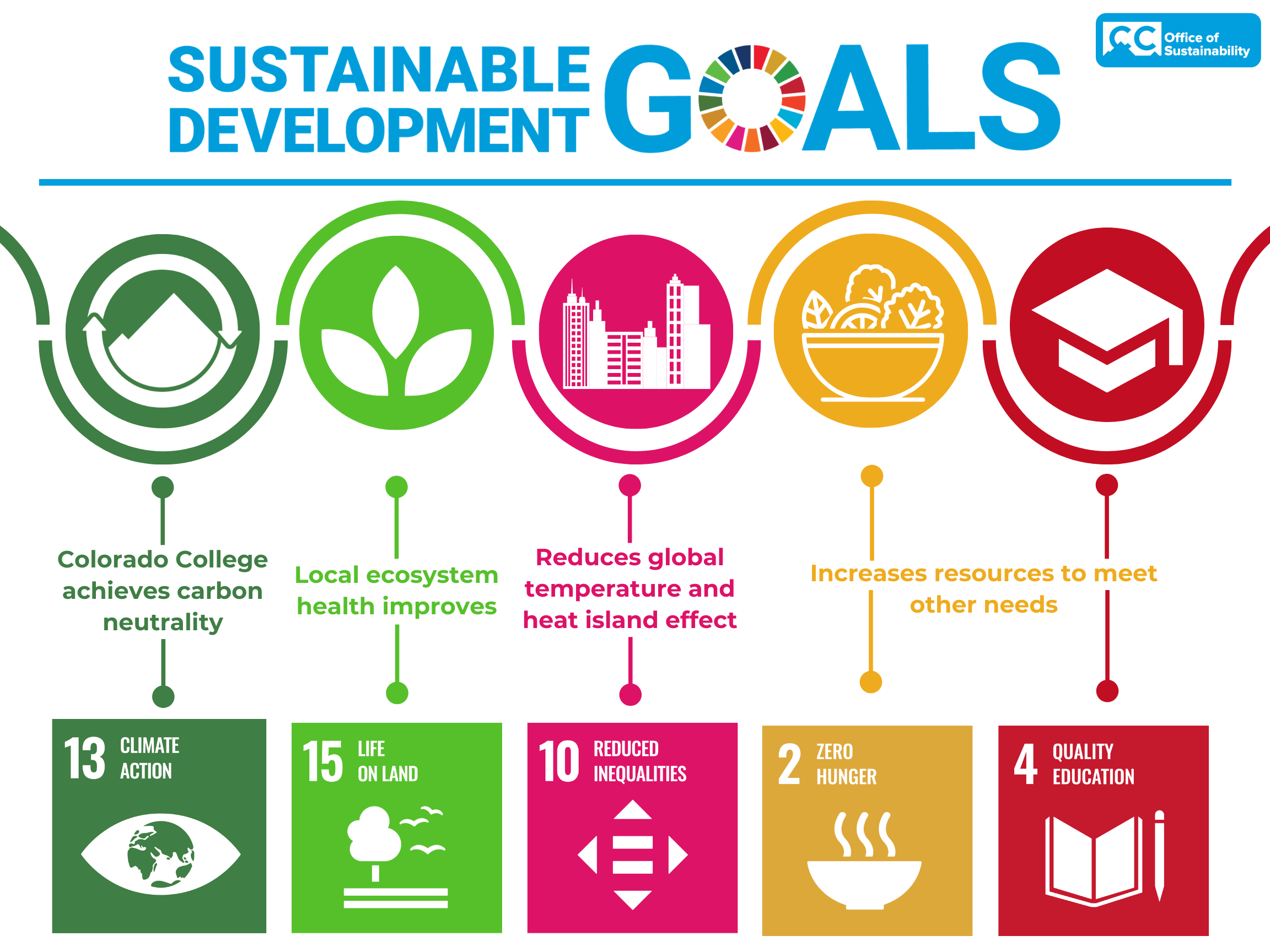
Left: The United Nations Sustainable Development Goals (SDGS)
Right: An example of how the SDGS are interconnected
At CC, there are endless ways that we're impacting these goals and many students, faculty, and staff doing research, many offices working explicitly in one of these areas that directly impact many more of these goals, many examples of efforts that help lead to a more sustainable world as envisioned by the SDGs. Throughout this year, we'll focus on some of these efforts happening across the campus - efforts that wouldn't necessarily be thought of as sustainability without the context given above. Our aim is to show that most of us are doing sustainability work already and by helping to see connections to other goals, we can be better informed about all of the many ways CC is aspiring to make our world more sustainable.
This is all the more important during the current pandemic: our own individual decisions and actions and those that CC makes impact all of us in different but profound ways. If we make those decisions without the spectrum of their impacts in full consideration, we may address one impact but inadvertently cause harm in another area. These are difficult and trying times, no doubt. But it has become ever more apparent that our decisions impact our health and wellness, our finances, all of our livelihoods, and our students' access to education. Sustainability couldn't be more relevant or critical than it is at this moment. I look forward to bringing examples of sustainability efforts across CC through these blockly communications this year.
By Ian Johnson



